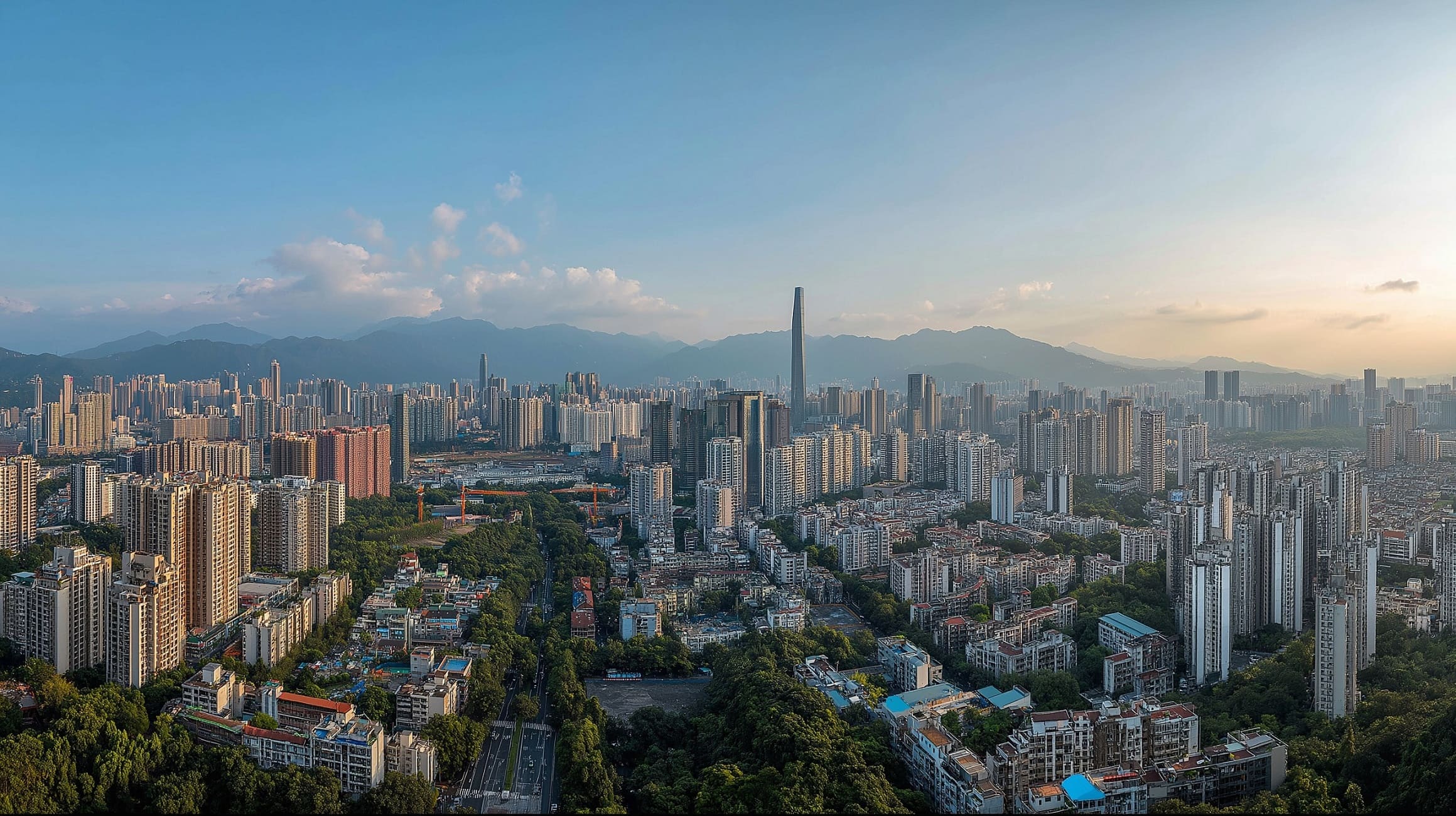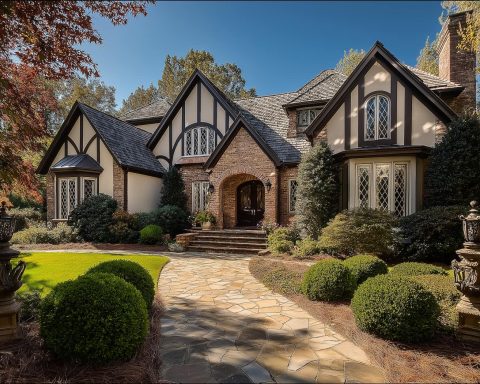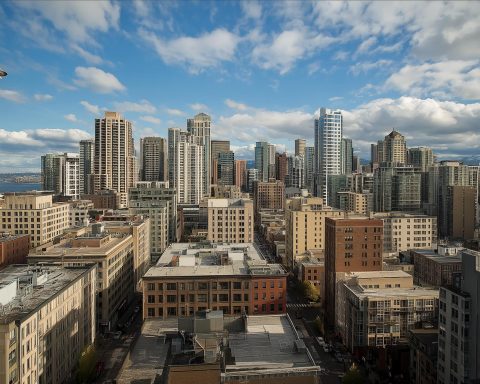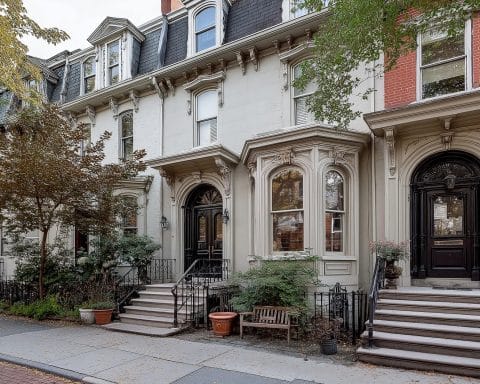Shenzhen’s real estate market in 2025 is experiencing a pivotal rebound after a period of correction. Transaction volumes have surged amid government support measures, and prices are stabilizing in China’s tech megacity. The market spans residential, commercial (office and retail), and industrial real estate sectors, each showing distinct trends. Home sales jumped in early 2025 as pent-up demand was unleashed sz.gov.cn, while the commercial office sector is working through high supply with softening rents sz.gov.cn. Industrial and logistics properties remain buoyed by Shenzhen’s manufacturing and tech economy. This report provides a comprehensive analysis of pricing trends, rental yields, supply-demand dynamics, demographics, policy influences, infrastructure developments, and foreign investment impacting Shenzhen real estate. We also compare trends across districts (from upscale Nanshan and Futian to more affordable Longgang) and highlight notable upcoming projects poised to shape the market’s future.
Shenzhen, often dubbed China’s Silicon Valley, is a core engine of the Greater Bay Area and aims for 5.5% GDP growth in 2025 cnbayarea.org.cn. Its robust economy (5.8% growth in 2024) and population of ~18 million (growing ~1.1% annually) savills.com create strong underlying real estate demand. However, the city and nation have emphasized that “housing is for living, not for speculation,” leading to policies that prioritize stability and affordability. Below, we delve into each segment of Shenzhen’s property market in 2025 and beyond, providing valuable insights for investors, developers, and homebuyers.
Economic and Demographic Influences on Real Estate
Shenzhen’s booming tech-driven economy and population trends set the stage for its property market. The city’s GDP target of 5.5% growth in 2025 cnbayarea.org.cn underscores confidence in continued expansion, following strong 2024 growth. High-tech manufacturing, electronics, finance, and R&D sectors thrive here, supporting job creation (200,000 new jobs planned in 2025) and income growth cnbayarea.org.cn – factors that bolster housing demand. Shenzhen’s population reached 17.99 million in 2024, up 1.1% YoY savills.com, the fastest growth in the Greater Bay Area, partly due to migration of skilled talent. This youthful, expanding populace (drawn by opportunities in technology and finance) underpins end-user housing needs, even as speculative demand is curbed.
Demographically, the city’s rising middle-class and influx of educated “tech migrants” fuel demand for upgrader homes and quality rental housing. Shenzhen’s proximity and improved integration with Hong Kong also play a role – the city has overtaken Macau as the most popular weekend destination for Hong Kong residents savills.com. Cross-border movement is stimulating retail and hospitality real estate (more on that in Commercial Sector), and some Hong Kong buyers invest in Shenzhen homes to capitalize on relative affordability and future upside. Overall, strong economic fundamentals and population growth form a solid foundation for real estate, though the market also contends with the legacy of China’s broader property downturn in 2022–2023.
Government Policy and Housing Regulations
Policy environment has been a decisive factor in Shenzhen’s 2025 market turnaround. After a prolonged housing slump, Chinese authorities rolled out significant easing measures in late 2024 to “revive housing transactions” globalpropertyguide.com globalpropertyguide.com. Shenzhen responded with local policy tweaks around September 2024 that spurred a surge in sales. For example, down payment requirements and home purchase restrictions were relaxed, and mortgage rates on existing loans were lowered to reduce buyers’ costs globalpropertyguide.com. These changes unleashed pent-up demand: by Q4 2024, transactions soared and prices stabilized. In October 2024, Shenzhen’s new home prices ticked up 0.1% MoM – breaking an 18-month decline szft.gov.cn – and second-hand prices rose 0.7% MoM (after 13 months of drops) szft.gov.cn. The momentum continued into early 2025, aided by “preferential policies” that Savills credits for the market’s strong Q1 performance sz.gov.cn.
Beijing’s stance remains that housing should be affordable and not purely an investment vehicle. There is ongoing discussion of property tax pilots (Shenzhen is a candidate city), and Shenzhen has a quota system to manage home purchases (e.g. limits on non-local buyers, etc.), though enforcement eased somewhat in 2024’s stimulus push. In April 2025, China’s Politburo emphasized “accelerating urban renewal” – including redevelopment of urban villages and aging housing – and optimizing policies for absorbing unsold homesnews.szhome.com. This indicates further support for the supply side: redevelopment projects and possibly government purchase of excess inventory to stabilize the market globalpropertyguide.com. Shenzhen’s government is also investing heavily in public rental and subsidized housing, aiming to ensure a supply of affordable homes for talent.
Crucially, first-time buyers enjoy favored status (with lower down payments and subsidies), and in 2025 Shenzhen adjusted its definition of “first-time homebuyer” to be more lenient, making more people eligible for preferential mortgages. Additionally, transaction taxes for upgrading to a larger home have been reduced globalpropertyguide.com, encouraging churn in the market. The net effect of these policies has been a restoration of buyer confidence. The Shenzhen Real Estate Intermediary Association noted an “enthusiastic market response” to the late-2024 policy changes, calling them a “robust foundation for sustainable and healthy development” szft.gov.cn of the market.
Looking ahead, policymakers are expected to remain supportive but cautious – further sharp price rises are not the goal. Analysts forecast mild declines or flat prices in 2025 nationwide, with growth resuming modestly in 2026 (+1.2%) and 2027 (+2.0%) globalpropertyguide.com. For top-tier cities like Shenzhen, a “mild correction” is anticipated before stabilization by 2026 globalpropertyguide.com. In summary, government measures in 2024–2025 have tilted pro-growth for housing (after the harsh “Three Red Lines” developer crackdown earlier), aiming to engineer a soft landing and gradual recovery of China’s property market.
Major Infrastructure and Development Projects
Infrastructure and new developments are reshaping Shenzhen’s property landscape across districts:
- Urban Rail & Transport: Shenzhen’s metro network continues to expand, improving connectivity to outer districts like Longgang, Pingshan, and Guangming. New lines and extensions (e.g. Line 16 to Longgang, inter-city rails) are making more areas accessible, boosting housing demand there. The Shenzhen–Dongguan–Huizhou intercity rail and ongoing upgrades to Shenzhen’s airports and ports (Bao’an International Airport’s new Terminal, Shekou Cruise Homeport improvements) further integrate the city region.
- Qianhai Cooperation Zone: The Qianhai Shenzhen-Hong Kong Modern Service Industry Cooperation Zone in western Shenzhen (bordering Bao’an/Nanshan) is one of the most notable development areas. Qianhai is undergoing a massive expansion (planned area grew to 120 km²) and is filling up with Grade-A office towers, innovation parks, and upscale residences. As an open zone with special policies to attract Hong Kong and foreign firms, Qianhai is creating a new CBD. Projects like Shenzhen Bay Technology Eco-Park and Qianhai Kerry Centre are adding commercial space, which will influence office supply and rents citywide. For residential, Qianhai’s proximity to Hong Kong (via the new Shenzhen–Hong Kong Land Border at Qianhai) makes it attractive for cross-border professionals; prices here rival core districts.
- Shenzhen Bay Super Headquarters Base: In Futian/Nanshan, the Shenzhen Bay Super HQ Base is an ambitious cluster of supertall skyscrapers planned as headquarters for Fortune 500 companies. While still under construction (with completions through the late 2020s), this project will cement Shenzhen’s status as a global business hub. The promise of iconic towers (some exceeding 400m tall) and mixed-use complexes (offices, luxury apartments, retail) is already boosting land values in the vicinity.
- Advanced Manufacturing Parks: Uniquely, Shenzhen is innovating in industrial space by building high-rise factory campuses. The city plans to “accelerate construction of 20 advanced manufacturing industrial parks and high-rise factories” by 2025sz.gov.cn across districts like Bao’an, Longhua, Guangming, and Longgang. These projects (covering 300 km² in total) will house tech manufacturing, robotics, new energy, and other strategic industries news.cgtn.com. For example, Guangming District opened a new intelligent manufacturing park hosting AI and precision instrument firms szgm.gov.cn. Such developments not only drive industrial property demand but also create jobs and housing needs in those districts.
- Urban Regeneration Projects: Shenzhen is constantly redeveloping its older areas. Notable urban renewal projects in 2025 include the Lychee Garden Redevelopment in Futian and Nantou Ancient Town area revitalization in Nanshan, as well as numerous old factory area conversions into creative industry parks or apartments. Redevelopments of former urban villages (“城中村”) – e.g. the Shuiwei and Baishizhou villages – are adding new housing supply in prime areas. The city’s “city update” initiative, backed by central funding in 2025news.szhome.com, means more such projects to replace dilapidated housing with modern, higher-density developments.
- Notable Real Estate Projects 2025+: On the residential front, several high-profile projects are expected to come to market. In Nanshan, the CITIC Front Bay (Yuanwafu) project in Shenzhen Bay, an ultra-luxury seafront development, is anticipated to “poke through” Shenzhen’s previous price ceiling – since Shenzhen removed price caps on new homes, this project could launch at record prices for the city sohu.com. Also in late 2024, China Resources Land and partner developers paid a record land price for a site in Houhai (Shenzhen Bay area), signaling confidence in the top-end market sohu.com. In Futian, upcoming projects like Excellence & Kingkey’s redevelopment in Antuoshan and New World’s project near Xiangmihu will add new luxury residences in 2025–2026 sohu.com sohu.com. On the commercial side, grade-A office completions in 2025 include 14 new office projects totaling ~893,000 m² sz.gov.cn (many in Qianhai, Houhai, and Futian), which will lift office stock by ~7.9% sz.gov.cn. This influx of supply will influence office vacancy and rents as discussed later.
All these infrastructure and development projects enhance Shenzhen’s connectivity and attractiveness, but they also introduce new supply that the market must absorb. Investors should track which districts will benefit (e.g. areas getting new transport links often see property value uplift) and where oversupply risks might emerge (e.g. a glut of office space in certain business districts).
Residential Real Estate Sector
Sales Volume, Prices and Supply-Demand Dynamics
Shenzhen’s residential market is rebounding in 2025, with transaction volumes up sharply from the previous year. In Q1 2025, over 26,000 new and second-hand units were sold, a YoY increase of 67.7% sz.gov.cn. This resurgence began after policy relaxations in late 2024: for example, in just the first 24 days of November 2024, 7,800 new apartments sold (daily sales up 201% YoY) and 5,477 second-hand units sold (up 118% YoY) szft.gov.cn. Such figures marked the strongest activity since 2021. Savills data showed new home sales area was up 61.3% YoY in Q1 2025 sz.gov.cn, reflecting buyers rushing back into the market.
Despite the sales boom, price trends have been relatively stable – the market is recovering volume before price. After falling through 2022–2023, home prices are now bottoming out. By March 2025, Shenzhen’s new home prices were roughly flat year-on-year, even down a marginal 0.4% YoY globalpropertyguide.com. Second-hand (resale) home prices were still about 3% lower YoY globalpropertyguide.com, but the declines have been narrowing for several monthsnews.szhome.com. In April 2025, second-hand prices dipped only 0.21% MoM and –2.88% YoY in Shenzhennews.szhome.comnews.szhome.com, the smallest drop among China’s top ten cities. In fact, Shenzhen’s price index performance was the most resilient, indicating a near stabilizationnews.szhome.com.
Current price levels: According to CREIS data, as of March 2025 Shenzhen’s average new commodity housing price was around ¥52,700 per m² and second-hand homes averaged ¥67,600 per m² globalpropertyguide.com. However, local listing data suggests citywide resale asking prices closer to the high-¥50,000s per m² in mid-2025 (Anjuke reports ~¥57,000) as sellers in less prime areas have cut expectations. Price trends vary greatly by district (see next section). Overall, the city’s home prices remain the highest in mainland China aside from central Shanghai and Beijing. Even after the recent correction, housing affordability is stretched – price-to-income ratios in Tier-1 cities like Shenzhen are extremely high, and the government has signaled it will prevent another speculative surge.
On the supply side, developers in Shenzhen have been cautious. New launches of projects slowed in 2022–2023 due to China’s developer debt crisis and weak market sentiment. This created a backlog of unabsorbed inventory in some areas. But completions are picking up as projects delayed by financing issues get back on track. Morningstar analysts expect “new home starts to remain subdued throughout 2025” in China, but completions will improve due to policy support globalpropertyguide.com. In Shenzhen, that means a moderate flow of new condos hitting the market – enough to give buyers choice, but not a flood. The government also directly increased affordable housing supply; Shenzhen has an ambitious target to have 1 million units of subsidized housing by 2035. Already, tens of thousands of units of talent housing and public rental flats are under construction, which will eventually alleviate some demand in the private market.
Demand dynamics: End-user demand (from first-time buyers and upgraders) is currently the main driver, stimulated by lower mortgage rates and easing policies. Investor demand (speculative buying for capital gains) remains muted compared to the boom years, due to stricter regulation and the memory of recent price dips. That said, Shenzhen’s long-term prospects continue to attract investment from wealthier domestic buyers and some foreign buyers (Hong Kong, expats) who see value in dips. The city’s fundamentals – population inflow, limited land, and its pivotal role in the Greater Bay Area – suggest inherent demand pressure. For now, inventory levels in the second-hand market are relatively high (many listings as owners look to sell into the revival), which keeps price growth modest. But transaction data indicates that fairly priced homes, especially in popular districts, can sell quickly (some new launches in late 2024 sold out within hours szft.gov.cn).
Residential Prices by District and Segment
Shenzhen is a city of diverse sub-markets, with a stark contrast between its core districts and outlying areas. Here is an indicative comparison of average second-hand residential prices across districts (as of mid-2025):
| District | Average Resale Price (Jul 2025) | Notes on Trend |
|---|---|---|
| Nanshan (Tech & upscale coastal) | ¥87,600/m² shenzhen.anjuke.com | Highest prices; many luxury areas above ¥100k. Prices rebounded ~+8.6% YoY after 2024 dip. Strong demand from tech elites and expats. |
| Futian (CBD and central) | ¥73,200/m² shenzhen.anjuke.com | Premium core district with luxury estates (many neighborhoods ¥80k+). ~10% YoY rise from a low base shenzhen.anjuke.com. High-end demand robust, supported by top schools and jobs. |
| Luohu (Old city center) | ¥47,800/m² shenzhen.anjuke.com | Mid-tier pricing; oldest downtown area with aging stock. Slight YoY uptick (~+6.9% shenzhen.anjuke.com) as it recovers. Popular for budget-conscious buyers seeking central location. |
| Bao’an (NW district incl. Qianhai) | ¥54,600/m² shenzhen.anjuke.com | Diverse: Qianhai/Center are expensive (~¥80k) but other areas more affordable. Overall ~+10.6% YoY shenzhen.anjuke.com with new metro lines and projects driving growth. |
| Longgang (NE district, large & suburban) | ¥36,000/m² shenzhen.anjuke.com | Most affordable major district. Saw ~+11% YoY bounce shenzhen.anjuke.com after steep prior drops. Ample new supply keeps prices moderate. Appeals to first-time buyers. |
| Longhua (North, emerging subcenter) | ~¥50,000–60,000/m² (est.) | Rapidly developing; close to Futian, with new projects (e.g. Shenzhen North area). Prices recovering; strong demand for new homes, given infrastructure improvements. |
| Others (Yantian, Pingshan, Guangming, etc.) | ~¥30,000–50,000/m² (varies) | Yantian (¥45k) offers coastal living but is far east. Pingshan (¥28–30k) and Guangming (~¥33k) are relatively cheap, targeted for industrial growth. All saw modest upticks as connectivity improves. |
Sources: Anjuke listing prices July 2025 shenzhen.anjuke.com shenzhen.anjuke.com shenzhen.anjuke.com shenzhen.anjuke.com shenzhen.anjuke.com.
The table highlights how Nanshan and Futian dominate the luxury segment. A recent survey showed 18 sub-districts in Shenzhen have average second-hand prices above ¥80,000/m² – all but one are in Futian or Nanshan sohu.com. These two districts are magnets for high-end buyers (tech executives, finance professionals, and affluent families), offering top schools, jobs, and amenities. They accounted for a large share of transaction value; in 2024, Futian and Nanshan each sold about 9,000+ second-hand homes, ranking 2nd and 3rd in volume (just behind much-larger Longgang) sohu.com. This indicates not only high prices but also liquidity in these markets.
By contrast, Longgang and Bao’an see the highest transaction volumes because of abundant supply and lower prices – they serve the mass market and first-home buyers. Longgang, for instance, led 2024 in sales count, reflecting its many new projects and affordable estates. As the city expands outward, these peripheral districts are urbanizing fast (with new centers like Longgang CBD in Bantian and Bao’an’s coastal center). Price growth there can be more volatile (driven by policy and supply swings), but long-term, improved transport links (e.g. new metro lines) are closing the gap to urban core prices.
New vs. Second-hand price gap: It’s worth noting that in Shenzhen, new homes are often sold at slightly lower prices than comparable second-hand units, due to government price guidance and developers’ need to sell quickly. For example, as of April 2024 the average first-hand (new) transaction price was ¥61,328/m², down 1.5% YoY pdf.savills.asia, while second-hand averaged higher. This gap means new launches can attract intense interest (some become “daylight” sell-outs as seen in late 2024 szft.gov.cn). In 2025, with price caps eased, some high-end new projects may launch above second-hand prices (e.g. the CITIC project in Shenzhen Bay might set a record sohu.com). Generally, however, new supply in the mid-market is priced to move units, putting competitive pressure on resale owners.
Rental Market and Yields
Shenzhen’s residential rental market is active, given the huge migrant population (many young workers rent). Rents had been relatively stagnant or down during COVID years, but as the economy reopened, rental demand picked up. Still, rent increases have not matched housing price growth over the past decade, resulting in low rental yields by global standards.
As of mid-2025, gross rental yields in Shenzhen average around 2.6% per annum globalpropertyguide.com – in line with other Tier-1 Chinese cities. Specifically, an average 3-bedroom apartment (~$523k to buy, ~$1,179 monthly rent) yields ~2.7% gross globalpropertyguide.com. Smaller units yield similarly (2.6–2.7%). After costs (maintenance, taxes, etc.), net yields are typically only ~1% or so globalpropertyguide.com. These figures underscore that Shenzhen’s residential investors primarily bank on capital appreciation rather than rental income.
That said, there are signs yields have bottomed: rents have started to rise gently as the job market improves and graduates flood in, while purchase prices have leveled off. In fact, one analysis noted rental yields in China’s top four cities edged up to about 1.8% net in H1 2023 yicaiglobal.com, from historic lows, as housing prices corrected. Shenzhen’s rental affordability (rent-to-income ratio) is still a challenge for tenants – average apartment rents can easily consume 30%+ of a young professional’s income in the city center. The government has promoted long-term rental apartments and supported rental platforms to ensure healthy development of the lease market.
For investors, the low yields mean holding costs are high relative to rent, which can dissuade speculative purchases. However, some landlords are now seeing slightly better returns: for instance, as borders reopened, demand for high-end rentals from expatriates and Hong Kong professionals went up, supporting rents in areas like Shekou and Futian CBD. On the supply side, an influx of institutional rental housing (e.g. Vanke’s Port Apartment brand and other REITs converting some unsold commercial spaces to rental units) could gradually increase vacancy and keep rents in check.
In summary, rental yields remain modest (~2–3% gross) globalpropertyguide.com in Shenzhen, reflecting pricey valuations. Investors should factor in that rental income alone will barely cover financing costs at current mortgage rates, so the investment thesis relies on long-term price growth plus perhaps currency diversification (for foreign buyers). The stable or slightly rising rents in 2025 are a positive sign of real demand, but any dramatic rent surge is unlikely given significant housing supply in the pipeline and government vigilance on housing costs.
Commercial Real Estate Sector
Office Market (Commercial Office Space)
Shenzhen’s Grade-A office market in 2025 is characterized by abundant new supply, high vacancy, and tenant-favorable rents. The city’s rapid skyline growth in the past few years has led to an oversupply of offices in some areas, just as COVID and tech industry headwinds dampened demand. As a result, the office sector is in a tenant’s market phase:
- Supply & Vacancy: In 2025, Shenzhen is adding roughly 0.9 million m² of new Grade-A office space sz.gov.cn, expanding total stock by about 7.9% sz.gov.cn. Major completions in Q1–Q2 include towers in Qianhai, Houhai, and Nanshan Science Park. This comes on top of significant supply delivered in 2022–2024. Consequently, the citywide office vacancy rate hovers around 27–30% in early 2025 pdf.savills.asia cushmanwakefield.com. By end of Q4 2024 it was ~29.0% savills.com, and it remained elevated in Q1 2025 (Knight Frank reported “a deep adjustment phase” with vacancies still near record highs). Some submarkets, like Qianhai, have even higher vacancy due to cluster of new buildings opening simultaneously.
- Demand Drivers: Despite the challenges, Shenzhen’s diverse economy provides some demand. The technology and IT sector remains the dominant driver of office leasing sz.gov.cn – homegrown tech giants and startups alike expand their space for R&D labs and offices. In Q1 2025, “new quality productive forces”-related firms (emerging tech) were actively leasing sz.gov.cn. The internet sector alone accounted for ~25% of office leasing volume in Q1 sz.gov.cn. Additionally, finance, professional services, and consumer services sectors are contributing steady leasing demand sz.gov.cn. A notable trend is the growth of cross-border e-commerce companies and their service providers, which took up significant office space (e.g. one segment leased ~10,000 m² in Q1) sz.gov.cn as they benefit from booming online trade and Greater Bay Area integration.
- Rents: With supply outpacing demand, landlords have been cutting rents to attract and retain tenants. As of Q1 2025, citywide average Grade-A office rent fell to about RMB 163 per m² per month, down ~3.5% quarter-on-quarter assets.cushmanwakefield.com. On a YoY basis, rents were down roughly 9% in late 2024 pdf.savills.asia and continued to decline into 2025. Savills’ index showed a –9.0% YoY rental decline as of Q4 2024 pdf.savills.asia, and that trend persisted. Effective rents (with incentives) are even lower, as many landlords give rent-free periods or fit-out subsidies. The pressure is across the board: even prime offices in Futian CBD saw rents slip, while new buildings in decentralized areas have deeply discounted launch rents to lure occupants. For now, the office market’s average rent is in a downward trend sz.gov.cn and expected to further drift down in 2025 before bottoming out.
- Outlook: The consensus is that Shenzhen’s office vacancy will remain high in the near term. “Persistent supply-demand imbalance” means citywide vacancy is expected to stay elevated and rents to decrease further research.jllapsites.com through 2025. However, there are bright spots: the recovering economy and business expansion in sectors like new energy vehicles, AI, and finance could gradually absorb space. Net absorption in Q1 2025 actually improved (nationally, first-tier cities’ net office take-up was up, with Shenzhen rebounding ~50–200% YoY in absorption) cbre.com.cn. If the trend continues, 2025 might mark the bottom for the office cycle, with a slow recovery thereafter. Investors are showing some interest – Q1 2025 saw office assets become a focus for investment funds (in China, core office buildings were the top investment target, especially by insurance funds) cbre.com.cn. Cap rates/yields for Shenzhen office have inched up due to lower prices, potentially enticing buyers who expect a future uptick.
Overall, companies looking for office space in Shenzhen now have plenty of options and bargaining power. For landlords, it’s a time to differentiate – buildings with better quality and sustainability features are capturing tenants (landlords are “optimizing their office assets to remain competitive”* cushmanwakefield.com, e.g. upgrading HVAC, adding amenities). Some older offices may be repurposed (to retail, co-working, or even converted to residential use) as part of the city’s push to optimize existing stock. The office market’s health will depend on Shenzhen’s success in nurturing new industries and perhaps the return of cross-border professionals (e.g. more Hong Kong firms setting up in Shenzhen if integration deepens).
Retail and Hospitality Real Estate
The retail property sector in Shenzhen is on a recovery path in 2025, buoyed by a rebound in consumer spending and an influx of tourists (especially from Hong Kong). After the pandemic lull, shoppers and tourists are back, and this is reflected in declining vacancies in malls and stabilizing rents:
- Vacancy and Demand: By Q1 2025, Shenzhen’s shopping mall vacancy rate dropped to ~6.8%, the lowest since 2020 savills.com. This marked six consecutive quarters of vacancy decline, indicating that retail space is getting absorbed. Savills data showed a 1.8 percentage point YoY fall in vacancy to 6.8% in Q1 savills.com. Such low vacancy – far below the national average of ~7.3% cbre.com.cn – underscores how strong Shenzhen’s retail recovery has been, thanks in part to the city’s successful containment of COVID earlier and rapid consumption rebound. Popular shopping districts (e.g. Luohu’s Dongmen, Futian COCO Park area, Nanshan’s Coastal City area) report high occupancy as domestic brands and F&B operators expand. Even newer malls in suburban areas have started to lease up as residential communities there grow.
- Rents: While occupancy improved, rents have been slow to rise. As of Q1 2025, Shenzhen’s average prime mall rent was still about 2.4% lower YoY savills.com. Landlords largely kept rents steady or offered slight reductions to support tenant recovery. By mid-2025, there are signs of rents bottoming out – with foot traffic and retail sales improving, some landlords are phasing out temporary rent relief. The overall environment is cautiously optimistic: stable rents allow retailers to regain footing, and any rent growth will likely be in 2026 once sales fully normalize. Notably, segments like luxury retail and high-end dining in Shenzhen Bay and Futian saw relatively quicker rent recovery due to resilient demand from affluent consumers.
- Cross-Border Shopping Boom: A unique driver for Shenzhen retail has been the surge of Hong Kong visitors post border-reopening. “Hong Kongers going north to spend” has become a trend, with Shenzhen now a top weekend destination for HK residents savills.com. They are drawn by Shenzhen’s large malls, variety of family attractions, and comparatively cheaper prices (due to RMB depreciation and different product mixes). This influx has boosted sales in Luohu (near the border) and Nanshan (theme parks, outlets) in particular. For instance, Hong Kong tourists have significantly lifted hotel occupancies and F&B revenues in Shenzhen. Meanwhile, Mainland tourists to Hong Kong are more about sightseeing than shopping now savills.com, meaning Shenzhen’s retail gains are not equally matched by HK – a one-way benefit flow savills.com. This dynamic is encouraging international retailers to open in Shenzhen malls to capture both local and tourist spending.
- Structural Trends: Shenzhen’s young population means experiential retail is key. Mall operators are allocating more space to restaurants, entertainment (e-sports arenas, immersive cinemas), and lifestyle services to draw footfall. “White-box” pop-up stores and new domestic brands (“white brand” goods) are on the rise cushmanwakefield.com, indicating an evolving retail mix. Additionally, e-commerce integration is evident – many brick-and-mortar stores double as showcase and fulfillment centers for online orders. The central government’s push to “increase consumption” savills.com provides tailwinds, with events like shopping festivals and subsidies for appliances or cars (some granted in 2023–24) indirectly boosting retail property use (showrooms, etc.).
- Hotel and Hospitality: The hospitality side of commercial real estate is also recovering. Shenzhen’s hotel occupancy and room rates have improved with the return of business travel and tourism. While not explicitly asked, it’s worth noting that new hotels (often part of mixed-use developments) are coming up in Qianhai and near Shenzhen World Exhibition Center to cater to growing MICE (meetings, incentives, conferences, exhibitions) demand. These enhancements to hospitality infrastructure further support retail (since tourists spend in malls).
Looking ahead, Shenzhen’s retail property outlook is positive, especially compared to a few years ago. With vacancy at multi-year lows and tourist flows robust (e.g. a 115% rise in international tourists through Shenzhen’s airport in 2024) savills.com, mall landlords are regaining confidence. That said, retail is an ever-evolving sector – older malls in less prime locations may need repositioning (some have been turning floors into co-working or education centers). Remote districts still see underperforming malls with higher vacancy research.jllapsites.com, but citywide, the trend is one of recovery. Investors find retail assets appealing again given China’s push for domestic consumption; and Shenzhen, with its high incomes and tech-savvy shoppers, is at the forefront of new retail concepts.
Industrial and Logistics Real Estate
Shenzhen’s industrial property sector – including manufacturing space, business parks, and logistics (warehouses) – is often overshadowed by its residential and office markets, yet it remains crucial. In 2025, this sector is marked by resilience and transformation:
- Manufacturing and R&D Space: Shenzhen is aggressively upgrading its industrial base. With industrial output forming 35% of Shenzhen’s GDPsz.gov.cn, the city has outlined plans to lead in advanced manufacturing. By 2025 it aims to establish multiple trillion-yuan industrial clusters (e.g. in electronics, telecom, equipment)sz.gov.cn. To support this, Shenzhen invests in new industrial parks and innovation hubs. The concept of multi-storey “smart” factories is being rolled out, enabling high-value manufacturing on limited land. Districts like Bao’an, Longhua, Guangming, and Pingshan are beneficiaries – for instance, 20 advanced manufacturing parks across ~300 km² are under construction in those districts news.cgtn.com. This not only increases industrial floor space but also raises standards (with smart facilities, green building features). The government even offers generous subsidies (up to ¥100 million per major project) to firms for factory technological upgradessz.gov.cn, incentivizing occupancy of these new spaces. Demand for modern industrial premises is high from sectors like electric vehicles, biotechnology, and aerospace (as Shenzhen diversifies beyond just electronics). Older factory compounds in urban areas are being redeveloped or repurposed (some into creative industry offices or apartments as part of urban renewal), concentrating industrial activity into planned zones.
- Logistics and Warehouses: Shenzhen’s role as a trade and e-commerce hub ensures strong logistics demand, though high land costs mean some warehousing has shifted to nearby Dongguan/Huizhou. Still, 2025 sees new logistics supply in the region, and absorption has been robust. In Q1 2025, China’s warehouse property sector had record net absorption (2.57 million m²) and vacancy nationwide fell to 20.3% cbre.com.cn. In Shenzhen itself, major 3PL (third-party logistics) and e-commerce firms (like JD.com, SF Express which is Shenzhen-based) continuously seek modern warehouse space, particularly near ports and airports. Cross-border e-commerce growth (shipping goods to global consumers) has fueled demand for bonded logistics facilities in Shenzhen. The Qianhai logistics park and airport logistics center have low vacancy. However, overall logistics vacancy in the broader Shenzhen area might be higher (in the low teens or around 20%) given some new completions. Rent for logistics space remains stable, with prime warehouse rents in Shenzhen around RMB 30–40 per m²/month depending on location.
- Hi-Tech Industrial Parks and Business Parks: A notable sub-segment is science and technology parks. Shenzhen High-Tech Industrial Park (SHIP) in Nanshan – often called China’s Silicon Valley core – remains highly sought-after; occupancy is near full and rents are high for industrial/office (it’s quasi-office R&D space). Newer parks in Longgang (Securities Tech Park), Bao’an and elsewhere cater to specific industries (AI, biotech). The government’s Made in China 2025 drive has funneled resources to these parks tearline.mil, resulting in high-quality facilities. For instance, the Guangming Science City is emerging as a major R&D base with state-of-the-art labs and will boost demand for both lab space and supporting offices/residences in that area.
- Land and Policy: Shenzhen’s limited land means industrial land is precious. The city has been creative, as mentioned, building up (vertical factories) and also “unlocking” rural land for industrial use via reforms. One policy approach is encouraging factories to build higher or relocate to intensive industrial parks, freeing some land for housing – this is an ongoing land supply strategy. Meanwhile, the central government is pushing logistics efficiency (reducing cost % of GDP), and Shenzhen contributes through smart logistics infrastructure (automation in ports, etc.).
The outlook for industrial real estate in Shenzhen is strong. As global supply chains reconfigure, some manufacturing is reshoring or relocating to China’s south – Shenzhen, with its innovation edge, should capture high-tech manufacturing while outsourcing lower-end production to less costly cities in Guangdong. Foreign investment in factories is picking up (e.g. Tesla’s new battery factory in Shanghai signals confidence in China manufacturing; Shenzhen could see similar projects in tech fields). For logistics, the Greater Bay Area integration (with infrastructure like the Hong Kong-Zhuhai-Macau Bridge and new land ports) will further boost Shenzhen’s logistics sector as a node connecting the GBA and the world.
Industrial property yields are typically higher than residential – often 5–7% gross – making it attractive to investors, especially given the government’s supportive stance (e.g. establishing China’s first REITs were in logistics parks). We can expect continued policy support for industrial and logistics real estate, since it ties directly into economic growth targets. In short, while not as headline-grabbing as apartments or offices, Shenzhen’s industrial/logistics real estate is a foundational sector with steady demand and government backing, likely to expand in tandem with the city’s industrial upgrade plans.
Foreign Investment and Outlook
Shenzhen historically has had less direct foreign real estate investment compared to cities like Shanghai or Beijing, due to more restrictive rules and its market being dominated by domestic buyers. However, it is a key part of the Greater Bay Area initiative to attract foreign businesses and capital. In the commercial sector, we see foreign firms expanding presence – e.g. overseas financial institutions in Qianhai, and multinational tech companies setting up R&D centers – which indirectly boosts office occupancy. The Qianhai cooperation zone offers incentives for Hong Kong and international firms, which is leading to office leasing deals involving foreign entities.
When it comes to property investment capital, 2024–2025 saw limited foreign institutional investment in China’s property due to broader concerns (developer debt, etc.), but there are signs of interest returning for solid assets. For instance, some foreign private equity funds and Hong Kong developers have partnered in Shenzhen projects, sensing a bottom in valuations. The commercial real estate investment volume in China in Q1 2025 was RMB 56.1 billion cbre.com.cn – while down YoY, it included some large office acquisitions in Tier-1 cities likely involving overseas capital. Shenzhen’s growth story and recent price correction could entice more foreign investors looking for long-term plays, especially if the Chinese government provides assurances and a friendlier business environment.
Homebuyers from Hong Kong deserve a mention: with travel normalized, more Hong Kong residents are considering buying homes in Shenzhen for investment or family (some are attracted by Shenzhen’s education opportunities for their children, or simply the larger living space per dollar compared to Hong Kong). One report noted more Hong Kong people investing in Shenzhen real estate as of 2025, drawn by the price gap and the ease of travel (just minutes across the border by high-speed rail or metro) sohu.com. This cross-border demand is mostly focused on areas near the Hong Kong border or well-known luxury projects. It remains a niche but noteworthy factor contributing to demand for high-end condos.
Projections for the Next Few Years
Looking beyond 2025, the general outlook for Shenzhen’s real estate is cautiously optimistic, with certain challenges:
- Residential: After the strong rebound in transactions, prices in 2025 are expected to be roughly flat to mildly down overall (analysts’ consensus is about a –2.5% change for 2025 globalpropertyguide.com). By 2026, most forecasts see stabilization or slight price uptick in Shenzhen’s housing market, given the city’s fundamentals. Tier-1 cities like Shenzhen should lead the recovery with low single-digit price growth in 2026–2027 globalpropertyguide.com, assuming the broader economy stays on track. The government will likely calibrate policies to prevent overheating – if the market rises too fast, we could see new cooling measures (like tighter credit). New supply from redevelopment and housing welfare programs will also come through, which might moderate long-term price growth but improve affordability. For investors: the next few years may not bring the heady price surges of the past, but rather modest growth and a focus on rental yield improvement.
- Commercial (Office/Retail): The office sector’s recovery will lag. 2025–2026 could still be challenging with high vacancy. JLL expects vacancy to “stay high and rents to decrease further” in Shenzhen’s offices near-term research.jllapsites.com, with a turning point likely in late 2026 when supply additions ease and economic growth absorbs space. By 2027, we anticipate a healthier office market if new industries (like artificial intelligence, fintech, metaverse companies) expand. Rents may gradually pick up from 2026 onward, but it could take several years to approach pre-2020 rent levels. Retail real estate, on the other hand, should see sustained improvement. As Shenzhen’s population and income grow, and tourism flourishes, retail rents could return to positive growth by 2026. Key retail projects (like the renovated Luohu Commercial City, new malls in expanding suburbs) will come online, but consumer demand is expected to keep pace.
- Industrial/Logistics: This segment is poised for stable growth. The push for industrial upgrades and self-reliance in tech manufacturing will likely intensify, benefiting Shenzhen. We foresee industrial rents inching up and high occupancy for quality facilities. One risk is that manufacturing companies may seek cheaper locales as Shenzhen land/labor is expensive, but the city’s strategy is to keep only high-value-add production – which it appears to be executing well. Logistics demand will grow with e-commerce and regional trade; by 2026–2027, if interest rates are lower globally, we might see an investment surge in logistics assets (including more REITs) in the Greater Bay Area, with Shenzhen being a prime area for such funds.
- Government and Policy: A wild card for projections is government intervention. If China’s property market nationally remains sluggish, more stimulus could come – e.g. further mortgage rate cuts, relaxing home purchase quotas, or even novel ideas like state-backed property buyers to clear inventory (some analysts suggested large-scale state purchases of unsold housing globalpropertyguide.com). Such moves could rapidly improve sentiment and prices. Conversely, if speculation overheats, restrictions could return. Shenzhen is likely to be a testing ground for balanced housing policy, given its importance. Additionally, any progress on a property tax could alter the investment calculus by raising holding costs – something to watch beyond 2025.
In conclusion, Shenzhen’s real estate market in 2025 shows a picture of recovery and resilience across sectors. Residential sales are strong and prices are near a turning point upwards, aided by supportive policies and genuine demand. Commercial real estate faces a period of adjustment, but the city’s economic dynamism and infrastructure upgrades lay the groundwork for future absorption. Industrial real estate remains a backbone, evolving with the city’s high-tech ambitions. For investors, developers, and homebuyers, Shenzhen offers opportunities – whether it’s timing the market entry during this stabilization phase, or focusing on high-potential districts and segments (like mass-market housing in growth areas, Grade-A offices at cyclical lows, or logistics facilities tied to e-commerce). The next few years will likely see Shenzhen’s property market finding a new equilibrium, characterized by sustainable growth rather than past volatility, in line with the city’s vision of high-quality development.
Sources: sz.gov.cn szft.gov.cn savills.com globalpropertyguide.com sohu.com and others as cited above.












